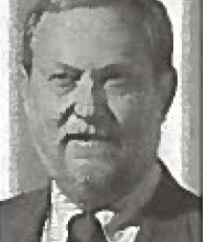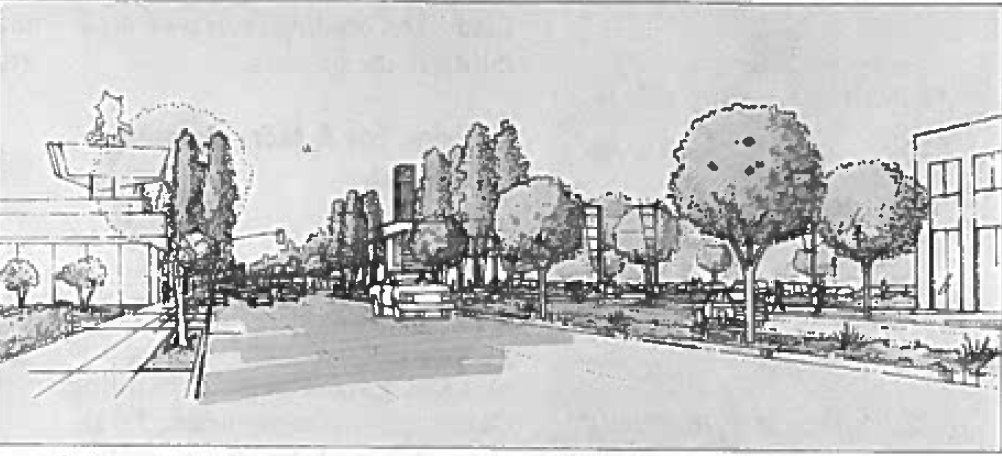The Figueroa Corridor links Downtown L.A. with the planned L.A. Arena, the Convention Center, USC, and Exposition Park Dean Robert Timme on the south—site of the soon-to-reopen California Science Center and possible home of a new NFL football team. The Planning Report spoke with USC Architecture Dean Robert Timme, FAIA on the status of The Figueroa Corridor Economic Development Strategy (which may be finalized by December) and the importance of a healthy Figueroa corridor to his university, Downtown and the Region.

Dean Robert Timme
"The concept of two venues—the arena and the Coliseum—creates, almost in the traditional sense of a shopping center, gigantic magnets of human activity."
As public discussion of the redevelopment of the Figueroa Corridor accelerates, could you tell us a little bit about the stakeholders involved, particularly what role you and USC anticipate playing?
As a school of architecture, we're in an interesting position. We're educating students through case studies about architectural and urban issues, and in a lot of cases, design studios are selected so students can take advantage of their own context.
Members of the faculty are advising the University, but we're also doing studies of the area for prototypical activities. Bob Harris, who is on our faculty, is also participating in studies for this.
Another venue is the USC School of Architecture Architectural Guild. The Guild is composed of members of the architecture community and the construction industry throughout Los Angeles. While it is the support group for the USC School of Architecture, it really has a life of its own; it gives awards such as the Spirit of Preservation and the Spirit of Urbanism awards, which went to Richard Koshaleck in 1995, and to Wayne Ratkovich last year. The Guild also puts on forum events such as the presentation of the Ten Minute Diamond to the City Council last year.
The Guild is sponsoring another forum event in November called "Fig Expo" on the plans for Figueroa and Exposition Park. The Guild is very proactive in terms of urban issues of Los Angeles.
Elaborate for our readers on the significance of a Figueroa Sports Corridor, and what motivates USC to tie so inextricably with this effort?
The concept of two venues—the arena and the Coliseum—creates, almost in the traditional sense of a shopping center, gigantic magnets of human activity. The focus of the entertainment and sports facilities in the area suddenly begins to bring incredible numbers of people into the center city.
Along with this will come all the other kinds of businesses and activities which can take advantage of this. This could mean anything from shopping to restaurants, clothing stores, etcetera. We're really saying that we've got our major tenants, and we will most likely develop the rest of the street with highly pedestrian-oriented shopping.
From USC's perspective, this suddenly places the University not along a street which is primarily car along a street which has a much more humanist sense to it. For USC to be tied to the activities which would come along with the development of the Figueroa Corridor on one edge, Exposition on the south edge—the developments surrounding the California Science Center, the Coliseum, if it happens, and the new school that Thom Mayne is working on—will create wonderful institutional resources and synergy between USC and the activities on Exposition. Already the School of Education is beginning work with the Science Center to create a MAST (math, arts, science, and technology) magnet school.
A Figueroa Sports Corridor which begins with USC on the south and continues north past the Arena to Dodger Stadium covers quite a distance. Can we assume that there will be ample transportation and land-use planning to accommodate the length of the Corridor?
That’s an excellent question because we're looking at tremendous numbers of people who will be coming into the area. We're not talking about people who go to the arena and then decide that they need to catch a transportation system to the Coliseum—it's not going to happen that way. We are talking about people who come from distant locations to the Corridor as a destination, and then from there might choose to go Downtown on a different transit mode. So, it's absolutely critical that the appropriate transportation system be in place for the scale of the individual.
From my experience, breakdowns usually occur when people must move from a primary system of transportation not to a secondary system, but perhaps to a tertiary or even lower-level system that can't handle the load. That's the classic problem in building a shopping center on tertiary roads that are fed by primary freeways—it causes immense congestion.
Transportation systems have been a concern when looking at USC—which is the major employer in downtown—and the surrounding area. The number of students, faculty, and staff we have in this location along with the visitors to Exposition Park was never conceived of in a public transit scheme. There is no good primary mass transit connection to this area.
Why has the public dialogue in Los Angeles around planning of the kind envisioned for the Figueroa Corridor been devoid to date of real passion, substance, and a citywide audience? Does planning have a constituency?
There are several different planning authorities that deal with different projects, and they tend to overlap one another. The MTA, for instance, is one of the strongest participants and it has its own planning authority. On the other hand, we have the private sector, which is the healthiest thing about Los Angeles compared to other cities, We are able to set up tax districts that achieve important goals on their own without necessarily having to initiate a larger move on a public scale.
What role should university schools of architecture play in the shaping of a public planning agenda?
We should be able to assist in any way possible, particularly in bringing forward ideas and exposing people to these ideas. That's why the Architectural Guild’s efforts, including the upcoming Fig Expo, are exactly what we should be doing. We should be encouraging public awareness, and we should be bringing USC's constituency to the table even if the individuals in question don't reside in this area—they can still be tied to the school.
There is another issue here, too, which is that there are institutions in the area who have hopes and dreams which they do not necessarily have the wherewithal to realize. This is characteristic of the Figueroa area and of South Central. To do our part, we put in place the Community Design Resource Studio to work on projects for entities that otherwise couldn't afford it.
Let's end with your offering a prognosis. Five years from now, how do you envision the Figueroa Corridor?
We keep talking about the Corridor, but I'm looking around from the center of the university to all its edges. I'm seeing what's happening on Western and on Vermont, which is very exciting. I'm seeing Shelby Jordan's housing projects on the western edge of Exposition Park and development north of campus, where many older homes are being restored.
People are going to wake up and say, this is not the same neighborhood that I thought it was. There has been a general feeling that around Exposition, Vermont, and Figueroa there has been urban decline. Gradually, however, with the economy coming back and all the projects out there, we may see some significant things taking place.
I'll give you a very good indicator: There are some phone companies interested in installing T1 lines throughout this area. That tells you that we're going to see a lot of high-tech companies coming in.
- Log in to post comments




